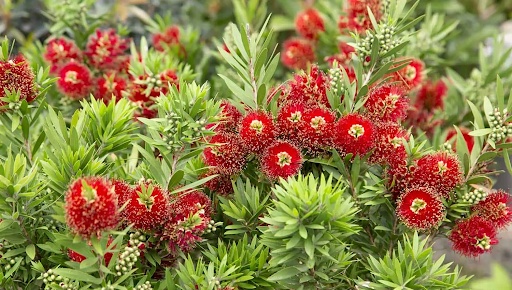In the world of gardening and landscaping, Callistemon, also known as the bottlebrush plant, is a star performer. Not only does it offer striking visual appeal with its unique bottlebrush-shaped blooms, but it also serves as a magnet for local wildlife, particularly birds and bees. If you're looking to create a vibrant, biodiverse garden that's as beneficial for the environment as it is beautiful, Callistemon is a fantastic choice. In this article, we'll explore the reasons why Callistemon is a wildlife-friendly plant, its unique characteristics, and how you can make the most of its presence in your garden.
Callistemon: A Welcoming Haven for Birds and Bees
Unique Bottlebrush Blooms
One of the most captivating features of the Callistemon plant is its unusual flower structure. The bright, feathery spikes of its blooms resemble a bottle brush, hence its common name. These vibrant, eye-catching flowers are a rich source of nectar, which acts as a natural magnet for pollinators such as bees and birds. With their unique appearance and vibrant hues, Callistemon flowers make a stunning addition to any garden.
Nectar-Rich Bounty
Birds and bees are constantly on the lookout for sources of food, and Callistemon offers a bountiful supply of nectar. Birds, including honeyeaters, lorikeets, and parrots, find the sweet nectar irresistible. These avian visitors are not only a treat for the eyes but also provide natural pest control by feasting on garden insects. Bees, on the other hand, are vital pollinators, and the nectar-rich Callistemon flowers provide them with sustenance while they go about their essential work.
Year-Round Appeal
One of the remarkable aspects of Callistemon is its year-round appeal to wildlife. While some plants bloom seasonally, Callistemon's nectar-rich flowers are available to birds and bees throughout the year, ensuring a constant flow of visitors to your garden. This continuous supply of food is particularly important during times when other nectar sources may be scarce.
Cultivating a Wildlife-Friendly Garden with Callistemon
Choosing the Right Variety
Before you dive into planting Callistemon, it's essential to choose the right variety for your region. There are numerous species and cultivars of Callistemon, each with its own unique features and adaptability. Research and consult local gardening experts to determine which Callistemon variety is best suited to your specific climate and soil conditions.
Planting and Care
Callistemon is relatively easy to grow, but it still requires proper care to flourish and attract wildlife. Here are some guidelines to ensure your Callistemon plants are thriving:
-
Sunlight:
Callistemon typically prefers full sun but can tolerate partial shade.
-
Soil:
Well-draining soil is crucial for the health of your Callistemon. By ensuring drainage root rotting is prevented.
-
Pruning:
Regular pruning, especially after the flowering season, helps maintain the shape and encourages new growth.
-
Fertilization:
While Callistemon is not excessively demanding, occasional fertilization can boost its growth and flower production.
Pilea Peperomioides: A Companion for Callistemon
In addition to Callistemon, you may want to consider planting Pilea Peperomioides in your garden. This popular houseplant, also known as the Chinese money plant, is a unique addition to any garden. Its round, coin-shaped leaves and easy maintenance make it a favorite among gardeners. While it may not directly attract birds and bees, it contributes to the overall biodiversity of your garden and complements the beauty of Callistemon.
Conclusion
Callistemon, the remarkable bottlebrush plant, not only graces your garden with its captivating beauty but also acts as a welcoming haven for birds and bees. Its nectar-rich flowers, unique appearance, and year-round appeal make it a valuable addition to any garden. By choosing the right variety, providing proper care, and pairing it with complementary plants like Pilea Peperomioides, you can create a vibrant, wildlife-friendly garden that benefits both your local ecosystem and your senses.


No comments yet